

Going for 50, and other thoughts
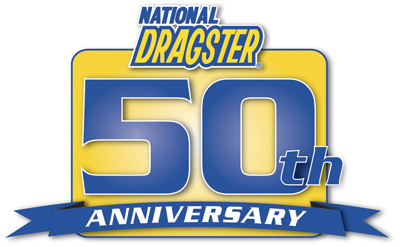 |
Yesterday, we shipped the 48th and final 2008 issue of National DRAGSTER to our pals at Conley Publishing in ultrachic Beaver Dam,
I wouldn't be any kind of drag racing reporter if I didn't have a few stats to toss at you, so, for the record, the issue that electronically zipped into the Internet's ether was number 2,301 in the long and proud history of National DRAGSTER, and like the 2,300 that preceded it, it was meticulously produced, from the issue's planning through its sendoff, from the creation, copy editing, and proofreading of the stories, through the selection of the photos and page designs that followed. If you could run an issue of ND through one of those gee-whiz CSI-type element analyzers, I'd guess that each would include fair mixes of pride, dedication, expertise, and good old-fashioned hard work and also a little piece of each of the more than 40 staff members who keep the wheels rolling with their weekly contribution to the puzzle.
What's especially noteworthy about this week's issue – aside from being packed with our typically thorough year-in-review package – is that it also marks the beginning of the 2009 publication season. On Monday, for example, the entire editorial staff will be deep into 2009 planning meetings, scheming on new ways to improve our weekly coverage of the sport, and, most notably, scheming on ways to celebrate what will be National DRAGSTER's 50th anniversary year. I'm pleased to unveil here, for the first time to the general public, the logo that will represent our yearlong celebration.

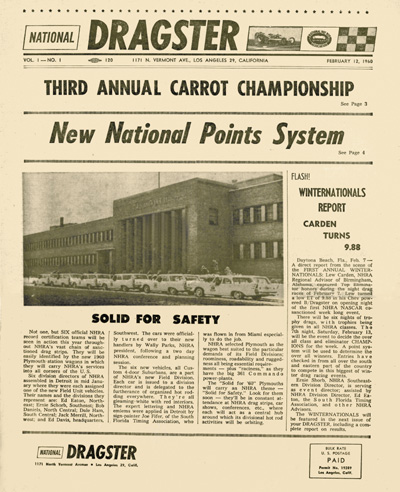 |
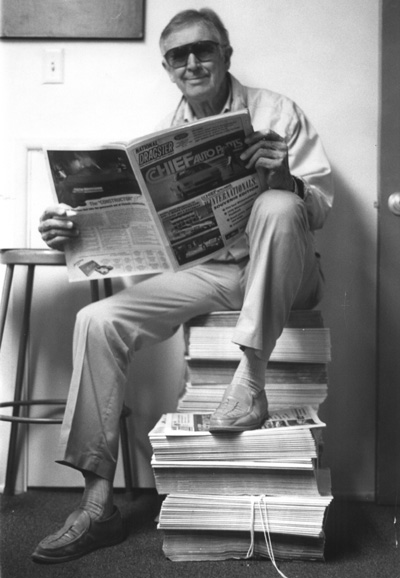 |
As its longest serving editor, I like to think it's no coincidence that National DRAGSTER and I were both born in 1960. Although I was just entering my third trimester of fetushood when the first issue hit the streets Feb. 12, I still feel like we're twins. I've seen well more than half (1,276, or 55.4 percent) of them off to the printer, and it's still a thrill each time.
I still find it amusing to pull out our somewhat tattered and torn copy of that first issue and read the manifesto that was laid out.
"For years, there has been a growing need for a publication devoted expressly to factual, interesting and informative coverage of activities and accomplishments that take place year-round within this fast-growing sport. That's the job the National DRAGSTER is proposed to do: keep you posted.
"Naturally we won't win any awards for journalistic prowess at first, nor will we compete very strongly against The New York Times, but we will do our utmost to bring you timely reports on what goes on at the hundreds of drag events that take place during each annual season, and we'll strive to keep our reports authentic and well-written.
"Giving credit where it is due and providing recognition where it is earned will be DRAGSTER's big objective. Concentration of attention will naturally be on NHRA-sanctioned strips, for it is sponsorship by NHRA that has made this publication possible. Event schedules will be announced and results posted, listing top performers in all areas. Technical information of importance to drag racers will be regularly provided, and timely tech tips will be abundant. In short, we've pledged ourselves to the task of creating greater understanding and appreciation of drag racing, an objective we think you'll also note in our advertisers' copy. "
In that first issue, Parks also answered questions regarding the new publication, which came on the heels of small newsletters like Tie Rod and Drag Link that had served as direct communiqués to the membership. Parks' answers at this point in history --- when the Winternationals had just been added as a second national event and NHRA still wasn't really in the drag racing entertainment business – are interesting.
It also was in this initial issue that the guidelines were set down that exist to this day, that DRAGSTER only covers NHRA activities at NHRA member tracks, with the intent being to reward the loyalty of those tracks with the biggest and best exposure for which a track manager could hope.
Q: Why didn't NHRA produce a drag racing newspaper before now?
A. NHRA was originated and has been conducted primarily as a car club coordinating body, having drifted into drag race sanctioning in response to the sport's early need for organization and standardization of procedures. We have long realized the necessity that existed for a well-edited publication to represent the sport and its participants, but only recently has NHRA been in a position where it could assume this responsibility with assurance for its success.
Q: Did any particular situation prompt NHRA to begin the National DRAGSTER?
A: Two things prompted NHRA's production of the DRAGSTER: the increasing need for a high-quality drag racing publication and our growing obligation to provide more valid recognition for NHRA-sanctioned strips and contestants.
Q: It is noted that the DRAGSTER will be published every other week. Is there a particular advantage to this?
A: Since one of the intents with the DRAGSTER is to produce a good appearing newspaper, it was felt inadvisable to attempt weekly publication. Neither was it deemed practical to solicit advertisers at this frequency, hence the DRAGSTER's every-other-Friday publication schedule.
Q: What strips will be featured in the new paper?
A: Editorial coverage and recognition in the DRAGSTER will be reserved for events sanctioned by National Hot Rod Association. As there are approximately 100 sanctioned strips located throughout the U.S. and in Canada, the responsibility for giving them all adequate coverage is a big one, and all efforts will be exerted in that behalf.
Q: What purpose do you feel another drag racing newspaper can fulfill?
A: Honest reporting, with up-to-date information based on sound fact, is a purpose in itself. We expect the editors and reporters of DRAGSTER to uphold these ideals and thereby help produce a better, more FUN type of sport with benefits for all concerned.
The third question points out that initially National DRAGSTER was published only every other week, which was the case for only the first two years, at which point we got into some really screwy frequencies. After 24 issues in 1960 and 1961, the staff produced 26 in 1962 and 1963 and 45 in 1964. In 1965, there were a whopping 52 issues, which was the schedule for three years before dropping to 51 for 1968 and 1969 and down to 49 for 1970, then up again to 51 from 1971 to 1973. From 1974 through 1981, 50 issues were produced each year before we settled on 48 issues.
Today, those four weeks – typically slow news weeks with little or no racing -- are not only about recharging the batteries but also used for production of special publications such as the annual Fan Guide and other projects.

A week ago today, on Thanksgiving Day, I wrote in this space about heroes we've lost this year, and then the phone rang Tuesday with the sad news that we'd lost 1958 Nationals champ Ted Cyr, adding yet another sad marker to the season.
It was Steve Gibbs on the line, and Cyr was one of his all-time heroes as well as a close friend. "We all have our heroes, and Ted was one of mine from day one," Gibbs shared with members of our e-mail group. "Ted was among the very best drag racers to ever go down the strip."
Gibbs had tipped us off a few weeks before that Cyr's health had taken a turn for the worst recently, so I had already begun the sad task of preparing yet another obituary. I polished it together later that afternoon, and Steve helped get me in touch with Cyr's wife of 58 years, Irene, who filled in a few details for me.
What always strikes me when I have to sit down and condense someone's amazing life into a couple of hundred words is how little we sometimes know about some of the people in our sport. The other thing, of course, is that the losses just keep piling up, and with each loss, it seems as if we lose another bit of our history.
I counted yesterday the losses of those on our list of the Top 50 Drivers from NHRA's 2001 50th Anniversary season, and it's saddening. Mickey Thompson (number 11), Lee Shepherd (number 12), Ronnie Sox (number 15), Jim Liberman (number 17), Don Nicholson (number 18), Pete Robinson (number 22), Jack Chrisman (number 23), Willie Borsch (number 34), Blaine Johnson (number 36), John Mulligan (number 41) Dave Schultz (number 44), Malcolm Durham (number 48), and Elmer Trett (number 50) are all gone.
The list of losses in our 51 to 100 list from that year is, unfortunately, longer: Gary Ormsby (number 52), Doug Cook (number 59), John Myers (number 62), Dick Landy (number 65), Pat Foster (number 68), Mike Sorokin (number 70), Art Arfons (number 71), Tony Nancy (number 74), Clayton Harris (number 82), Dickie Harrell (number 83), Mike Snively (number 85), Calvin Rice (number 91), Connie Swingle (number 95), Don Carlton (number 96), John Lingenfelter (number 97), and Jimmy Nix (number 100) have all gone to that great dragstrip in the sky. To be fair, "only" Sox, Nicholson, Schultz, Durham, Landy, Foster, Arfons, and Swingle passed after the list was revealed, but to realize that's nearly 30 of the top 100 drivers in our sport's history are no longer with us is simply staggering. I hope it's a long time before I have to write another one.

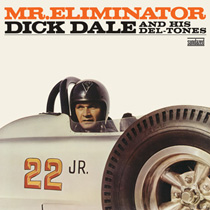 |
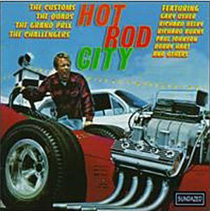 |
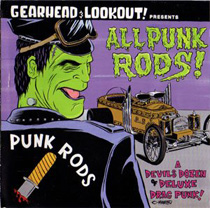 |
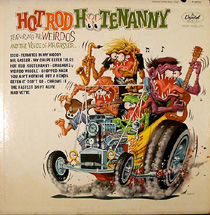 |
Response to Monday's car-songs blog was predictably strong, with requests flooding the airwaves here at KNDI.
Dick Dale and His Del-Tones obviously are on the playlists of many, including Bruce Walsh, Roy Nau, and drag racing photog and fly fashion femme fetale Dawn Mazi-Hovsepian, and with tunes like "Mr. Eliminator" (a song about Tony Nancy), "Wild Wild Mustang," "The Victor," "The Scavenger," "Hot Rod," "Racer," "Grudge Run," "Mag Wheels," "426 Super Stock," "Blond in the 406," and "Nitro Fuel," who could blame them?
Dawn practically made her own album: "RPM" by The Customs, "Fun, Fun, Fun" by The Beach Boys, "Let's Go To the Dragstrip" by The Nomads (and formerly done by The Tokens … "wimoweh, wimoweh …"), "Drag Strip Fury" and "Drag Strip Race" by The Rondelles, "Dragstrip Girl" by the Casino Rumblers, "Drag Racing Robot" by the Donut Kings, "Happy at the Drag Strip" by Guided by Voices/Herkimer Mohawk, "Two-Lane Blacktop" by Rob Zombie, and "All Fired Up" by '80s metal band Fastway, whose music video at right features cool '80s racing footage from E-town, including Bruce Larson's USA-1 Corvette, the Chi-Town Hustler, Tim Grose's Spirit, the Boston Strangler, and U.S. Male, plus jet cars and wheelstanders.
Former NHRA tech dude Jim Skelly remembers, "One of my buddy's older brothers had [Hot Rod Hootenanny] in vinyl back in the day. Two tracks that I remember are 'Termites in My Woodie' and 'If'n It Don't Go, Chrome It' (the writer ends up driving his whole rod into the chrome tank)."
Our pal "Berserko Bob" went with "Go Lil' Camaro Go" by the Ramones and the "Drivin' Sister" by Mott the Hoople, and both he and Down Under's Donato suggested Paul Revere and the Raiders' "SS 396."
Forget about your Hemis and your GTOs
I've got a new machine, and she really goes.
When I pass you up on the drag strip you'll know darn well
You've been beat by a porcupine V8 Chevelle
Taching it up now, you better be quick
Cus' nothing can outrun my SS 396.
John Snapp and others thought we ought to ride around with Wilson Pickett's "Mustang Sally," but he also plucked Simon and Garfunkel's lesser-known "Baby Driver" because of its drag race sound effect at the end of the song and the lyrics "Once upon a pair of wheels, I hit the road and I'm gone; What's my number; I wonder how your engine feels." Snapp also got his fingers snapping for "She Has Funny Cars," a cut from the Jefferson Airplane album Surrealistic Pillow that not only is not about drag racing but also does not even include the song title in the lyric. According to Wikipedia, the song discusses materialism in American society, but it has also been said that the song is about drummer Spencer Dryden's girlfriend's "funny" car. Hey, it was the '60s, and they also were seeing white rabbits.
"BeachBum Bill," from the decidedly unbeachlike town of Longmont, Colo., thought there was no song meaner than "The Little Old Lady From Pasadena," and Bob Maghy cut in with Brian Setzer Orchestra's "Switchblade 327."
Pullin' way ahead of the pack
Chop top deuce, Saturday night
Flames shootin' outta the back
Switchblade, don't cut him off
He won't cut you no slack
He'll cut you to ribbons if you come to town
He'll carve out his name in your back
Blacktop burnout, Saturday night
Try and catch him if you can.
 |
Shirley Smith suggests ZZ Top's "Manic Mechanic ("You want to race? If you insist. At that price, I can't resist."), and Phil Schaadt nominated Judas Priest's "Hell Bent For Leather" ("Black as night, faster than a shadowcrimson flare from a raging sun; an exhibition, of sheer precision") and a song that's also one of my favorites and on my CD, Golden Earring's "Radar Love."
I've been drivin' all night, my hand's wet on the wheel There's a voice in my head that drives my heel It's my baby callin', says I need you here And it's half past four and I'm shifting gear.
We also received a nomination for the apostrophe-heavy Doobie Brothers track, "Rockin' Down the Highway."
Got those highway blues, can't you hear my motor runnin'
Flyin' down the road with my foot on the floor
All the way in town they can hear me comin'
Fords about to drop, she won't do no more
And I smell my motor burnin'
Underneath the hood is smoke
Can't stop, and I can't stop
Got to keep on movin' or I'll lose my mind.
And finally, Dave Cox and Chuck Carman both were quick to point out Bruce Springsteen's tech faux pas in "Racing in the Streets" about putting fuelie heads on his 396; those are small-block heads, and the 396 is obviously a big-block.
Ranted Chuck, "I like the song, but if he got a set of fuelie heads on a 396, I'd like to know how, and even more so why. Not to just pick on Bruce, but I could write volumes on these kinds of mistakes. I know a lot of us would be happy to lend some 'tech support' so the songs, movies, books, etc. make sense to those of us who know better. [The movie] Two-Lane Blacktop is a classic example. When the '55 is in the gas station and the attendant asks, 'Chevy block?' it's almost painful to watch. Then when the guy asks, "Dual headers?" ... it's so stupid, it almost makes me angry." Oh man, Chuck, let's not get started on favorite car movies.
Or should we? Vanishing Point, Gone in 60 Seconds (H.B. Halicki's original version), American Graffiti, More American Graffiti, Funny Car Summer, Heart Like a Wheel, Bullitt, Grand Prix, Two-Lane Blacktop …



















































